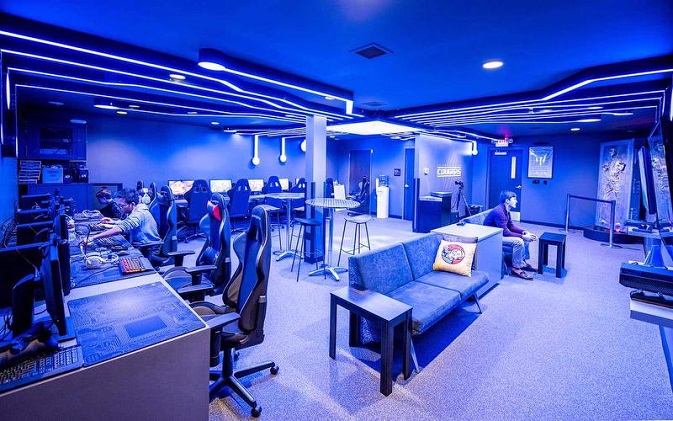I’ve spent considerable time visiting esports facilities across three continents, and the transformation has been remarkable. What started as glorified internet cafés has evolved into sophisticated training environments that would make traditional sports teams envious. The infrastructure investment isn’t just about flashy equipment — it’s about creating conditions where milliseconds matter and consistency becomes the difference between championship runs and early tournament exits.
The betting markets have taken notice, too. Platforms like 1xbet download now factor training facility access into their odds calculations, recognizing that teams with professional coaching and controlled practice environments perform measurably better than those grinding from gaming houses or shared apartments. It’s a data point that wasn’t even considered five years ago.
State-of-the-Art Gaming Infrastructure and Equipment Standards
Walk into any professional esports facility today, and you’ll immediately notice the attention to detail. The GenG facility in Los Angeles — which I toured last summer — maintains identical setups to those used at Worlds, right down to the specific model of gaming chairs. That’s not coincidence; it’s strategic preparation. Professional esports facility standards highlight how these seemingly minor details impact competitive performance.
The equipment standards these facilities maintain include:
- High-refresh rate monitors (240Hz minimum) with sub-1ms input lag certification
- Custom gaming PCs with enterprise-grade components and hot-swappable backup systems
- Tournament-approved mechanical keyboards and precision gaming mice with consistent switch actuation
- Dedicated fiber internet connections with multiple ISP redundancy and DDoS protection
- Climate-controlled environments maintaining 68-70°F with humidity control for equipment longevity
But here’s what’s really interesting: the facilities that succeed aren’t just buying the most expensive equipment. They’re creating environments that eliminate variables. T1’s training center in Seoul, for example, uses the same flooring material as the LoL Park venue. Sounds excessive? Maybe. But when you’re competing for million-dollar prize pools, every advantage counts.
The technical specifications matter more than most people realize. I’ve watched teams struggle with different monitor response times during bootcamps, throwing off timing that took months to develop. Professional facilities eliminate these disruptions by maintaining standardized hardware across all practice stations.
The Coaching Evolution and Performance Analytics
The coaching revolution in esports caught me off guard, honestly. When I first started covering competitive gaming, coaches were often just veteran players offering strategic advice. Now? These facilities employ sports psychologists, nutritionists, and data analysts who wouldn’t look out of place in an NFL training facility.
Esports coaching methodologies demonstrate how comprehensive these programs have become. Team Liquid’s Netherlands facility uses biometric monitoring during scrimmages — heart rate, stress indicators, even eye tracking to analyze decision-making patterns under pressure.
The data collection is getting sophisticated. Cloud9’s facility tracks everything from keystroke patterns to mouse movement efficiency, building player profiles that identify performance trends invisible to human observation. Coaches can now pinpoint exactly when a player’s reaction time degrades during extended practice sessions, optimizing break schedules and training intensity.
What’s particularly fascinating is how these facilities adapt traditional sports psychology for gaming contexts. The mental game matters more in esports than most people understand — there’s no physical fatigue to mask poor decision-making, no adrenaline rush to overcome technical mistakes. Players need mental conditioning programs that address the unique pressures of competitive gaming.
Global Expansion and Regional Market Adaptation
The international expansion tells a story about cultural adaptation that I find compelling. South Korea’s approach — evolving from PC bangs to specialized training centers — reflects their early adoption of esports as legitimate competition. European facilities, particularly in Denmark and Sweden, emphasize team coordination for tactical shooters, reflecting regional gaming preferences.
China’s scale impresses me every time I visit. The LGD Gaming center in Shanghai operates like a small university campus, combining competitive training with academic programs. Players can pursue degrees while maintaining professional gaming careers — a model that’s influencing facility development across Asia.
North American facilities have taken a different approach, integrating content creation with competitive training. The TSM facility includes streaming setups and production studios, recognizing that player brands drive revenue streams beyond tournament winnings. It’s a distinctly American approach to athlete development.
The economics behind these facilities vary dramatically by region. European facilities often receive government funding as part of sports development programs, while American centers rely heavily on private investment and corporate sponsorships. Asian facilities benefit from massive gaming company investments, creating some of the most advanced training environments globally.
Regional adaptation has produced interesting innovations. Scandinavian facilities incorporate wellness programs — saunas, meditation spaces, outdoor activities — reflecting cultural values around work-life balance. Meanwhile, facilities in warmer climates like Australia focus on climate control and extended operating hours to accommodate different training schedules.
The investment timeline for these facilities surprises many newcomers to the industry. Successful centers require 18-24 months to reach operational profitability, with revenue streams including team rentals, individual coaching programs, and tournament hosting. The initial capital requirements often exceed $2 million for a fully equipped facility.
Network expansion represents the next evolution in facility development. Organizations like ReKTGlobal operate multiple locations across continents, allowing teams to maintain consistent training standards while traveling for international competitions. This addresses a real problem — performance disruption when teams practice in unfamiliar environments.
The technological integration continues advancing. Virtual reality modules for tactical awareness development are being tested, while augmented reality systems help players visualize strategic concepts. These aren’t gimmicks — they’re tools that address specific training needs identified through performance analysis.
Market projections indicate continued growth, driven by increasing prize pools and corporate investment. The professionalization of competitive gaming creates demand for infrastructure supporting sustained high-level performance. These facilities aren’t luxuries anymore; they’re necessities for competitive success.

